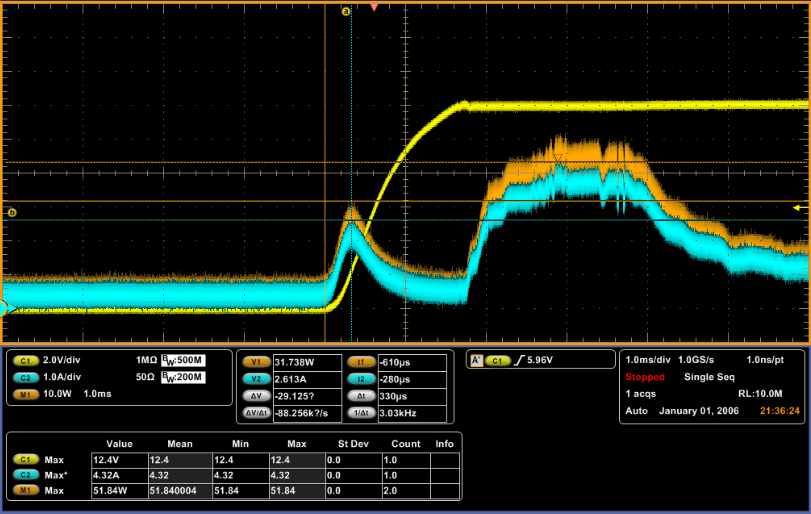Hello,
I'm designing a card with TPS25982 OCP function, and some application have questions.
(1) The waveform is Vout short ground while power on, peak max VIN is 18V.
Would you can suggest a way to stabilize waveform jitter?
(2) HDD inrush current max IIN is 3.8A, but our design target inrush current is 1A.
Why it has not stay 1A? whether these may damage to the IC internal?
Please help clarify questions and provide SOA information.
Thank you.
(1) Channel1: VOUT, Channel2: IIN, Channel3: Power good, Channel4: VIN
(2)Channel1: VOUT, Channel2: IIN, Channel3: +12V_EN, Channel4: VIN




